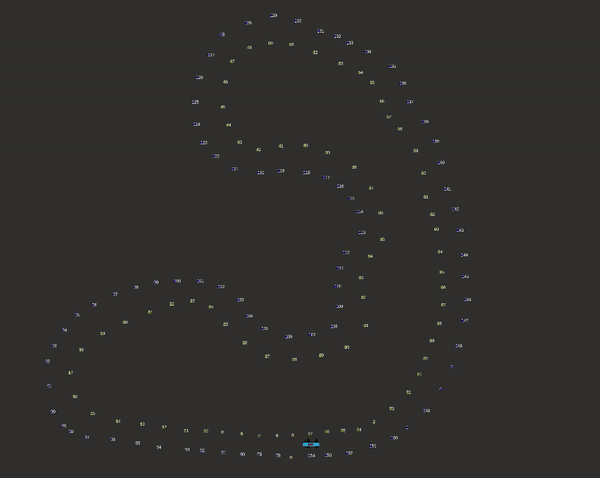Video Stabilization for Cranes
Video stabilization for camera footage taken from a crane payload.
Video stabilization for camera footage taken from a crane payload.
Learning to place objects onto flat surfaces in upright orientations.
Trajectory optimization and model predictive control for a Formula Student autonomous racecar
Controller for robotic manipulators which avoids self-occlusions.
Published in Journal 1, 2009
This paper is about the number 1. The number 2 is left for future work.
Recommended citation: Your Name, You. (2009). "Paper Title Number 1." Journal 1. 1(1). http://academicpages.github.io/files/paper1.pdf
Published in Journal 1, 2010
This paper is about the number 2. The number 3 is left for future work.
Recommended citation: Your Name, You. (2010). "Paper Title Number 2." Journal 1. 1(2). http://academicpages.github.io/files/paper2.pdf
Published in Journal 1, 2015
This paper is about the number 3. The number 4 is left for future work.
Recommended citation: Your Name, You. (2015). "Paper Title Number 3." Journal 1. 1(3). http://academicpages.github.io/files/paper3.pdf
Published:
We study the problem of placing a grasped object on an empty flat surface in an upright orientation, such as placing a cup on its bottom rather than on its side. We aim to find the required object rotation such that when the gripper is opened after the object makes contact with the surface, the object would be stably placed in the upright orientation. We iteratively use two neural networks. At every iteration, we use a convolutional neural network to estimate the required object rotation, which is executed by the robot, and then a separate convolutional neural network to estimate the quality of a placement in its current orientation. Our approach places previously unseen objects in upright orientations with a success rate of 98.1% in free space and 90.3% with a simulated robotic arm, using a dataset of 50 everyday objects in simulation experiments. Real-world experiments were performed, which achieved an 88.0% success rate, which serves as a proof-ofconcept for direct sim-to-real transfer.
Published:
Tower crane operators often have limited visibility during lifting operations in the construction of high-rise buildings. Providing the operator with visual feedback from the perspective of the payload has potential to reduce collisions. However, a camera feed from this perspective is susceptible to disorienting swinging motions. This paper presents an algorithm to digitally stabilize this low-frequency, high-amplitude swinging motion in 3D. A stabilized virtual camera feed is created to give the operator an intuitive perspective. The Euclidean transform between the actual and virtual cameras is related to an image transform. This is then used to warp the image to achieve the desired stabilization effect. Experimental validation with a robotic arm to simulate the crane dynamics demonstrates the effectiveness of stabilization.
Published:
Existing approaches to direct robot-to-human handovers are typically implemented on fixed-base robot arms, or on mobile manipulators that come to a full stop before performing the handover. We propose “on-the-go” handovers which permit a moving mobile manipulator to hand over an object to a human without stopping. The on-the-go handover motion is generated with a reactive controller that allows simultaneous control of the base and the arm. In a user study, human receivers subjectively assessed on-the-go handovers to be more efficient, predictable, natural, better timed and safer than handovers that implemented a “stop-and-deliver” behavior.
Published:
Occlusions caused by a robot’s own body is a common problem for closed-loop control methods employed in eye-to-hand camera setups. We propose an optimization-based reactive controller that minimizes self-occlusions while achieving a desired goal pose. The approach allows coordinated control between the robot’s base, arm and head by encoding the line-of-sight visibility to the target as a soft constraint along with other task-related constraints, and solving for feasible joint and base velocities. The generalizability of the approach is demonstrated in simulated and real-world experiments, on robots with fixed or mobile bases, with moving or fixed objects, and multiple objects. The experiments revealed a trade-off between occlusion rates and other task metrics. While a planning-based baseline achieved lower occlusion rates than the proposed controller, it came at the expense of highly inefficient paths and a significant drop in the task success. On the other hand, the proposed controller is shown to improve visibility to the line target object(s) without sacrificing too much from the task success and efficiency. Videos and code can be found at: rhys-newbury.github.io/projects/vmc/.
Published:
Convex optimization problems arise naturally when studying the fundamental limits of communication systems, such as computing quantities known as channel capacities. The Blahut-Arimoto algorithm is a well known method to solve for classical channel capacities, and recent works have extended this algorithm to compute various quantum channel capacities. We show that the classical and quantum Blahut-Arimoto algorithms can be interpreted as mirror descent, which is a well studied generalisation of projected gradient descent for non-Euclidean geometries. Using this perspective, we show how existing tools in convex optimization can be used to guarantee bounds on convergence rates, and how the algorithm can be modified to solve a wider range of related problems in quantum information theory.
Published:
Convex optimization problems arise naturally when studying the fundamental limits of communication systems, such as computing quantities known as channel capacities. The Blahut-Arimoto algorithm is a well known method to solve for classical channel capacities, and recent works have extended this algorithm to compute various quantum channel capacities. We show that the classical and quantum Blahut-Arimoto algorithms can be interpreted as mirror descent, which is a well studied generalisation of projected gradient descent for non-Euclidean geometries. Using this perspective, we show how existing tools in convex optimization can be used to guarantee bounds on convergence rates, and how the algorithm can be modified to solve a wider range of related problems in quantum information theory.
Undergraduate course, University 1, Department, 2014
This is a description of a teaching experience. You can use markdown like any other post.
Workshop, University 1, Department, 2015
This is a description of a teaching experience. You can use markdown like any other post.